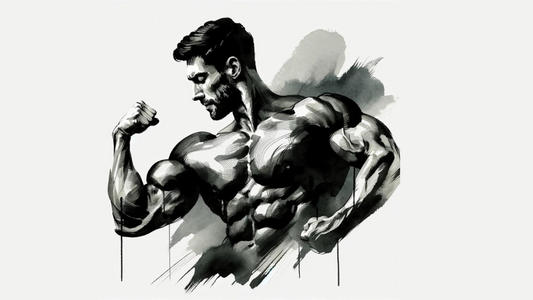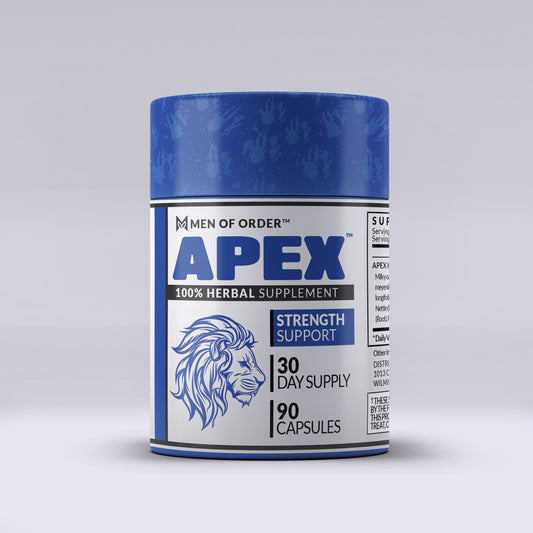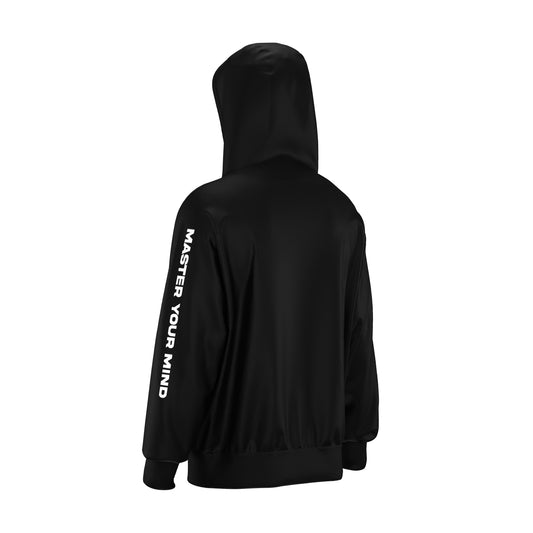What drives people to sloth behavior and causes them to defer chasing their dreams?
As a business development consultant and mentor, I've discovered a troubling phenomenon. I call it, "Mental Sloth Disorder". There are several comorbidities under the mental disorder category that contribute to this. With the use of the controversial DSM-5, I walked myself through this dilemma.
The commonality between these individuals is either a complete lack of pursuit or inconsistency in chasing their dreams. Obviously, there must be a mental disorder problem. I came to this conclusion because my strengths allow me to overcome the same weaknesses they suffer from. So, I concluded that I am no better than them. I simply know how to battle my demons.
The DSM covers mental disorders. And critics say that the DSM is not nuanced enough, and I agree. However, that does not make the DSM a useless tool. A hammer can build or it can destroy. That is based entirely upon the person using it.
My conclusion is that all of the humans on this planet suffer from at least one mental disorder and more so, comorbidities. Being a conscious human means managing your mental disorders. MenofOrder.com is a resource to help humans sort out and manage these disorders.
Diagnosing Mental Disorders
Much of the criticism of the DSM includes the diagnosing of mental disorders. Maybe this criticism is well deserved. However, one must first be aware of their disorders, then admit they have a disorder before they can tackle the disorders. In fact, acknowledging the disorder often resolves the disorder. It is the avoidance of this acknowledgment that makes disorders persist; at least partly.
The above does not and should not apply to all cases. Informing an individual of the name of their disorder can have catastrophic effects and more often than not. The individual who is doing the diagnosing must make this judgment, which comes with much responsibility. You can make someone aware of their problem without giving it a label.
Why is it sometimes counterproductive to inform someone of the label of their disorder? Because many individuals will identify with the label. They will begin to use it as an excuse for their failures. This association may sustain the disorder. The individual may believe that the disorder is a permanent trait of their being and therefore believe nothing can be done to resolve the disorder.
Depressive and Anxiety Disorders
I've concluded, at least for the moment, that Mental Sloth Disorder is the result of the following comorbidities: Depressive disorder and anxiety disorder. I believe it (mental sloth disorder) relates to anxiety disorders more than depressive disorders, although the two are often comorbidities.
DSM-5 says that depressive disorders can be observed as "the presence of sad, empty, or irritable mood, accompanied by somatic and cognitive changes that significantly affect the individual's capacity to function."
Major Depressive Disorder Diagnosis (A):
A. Five (or more) of the following symptoms have been present during the same 2-week
period and represent a change from previous functioning: at least one of the symptoms
is either (1) depressed mood or (2) loss of interest or pleasure.
Note: Do not include symptoms that are clearly attributable to another medical condition.
- Depressed mood most of the day, nearly every day, as indicated by either subjective report (e.g., feels sad, empty, hopeless) or observation made by others (e.g.,
appears tearful). (Note: In children and adolescents, can be irritable mood.) - Markedly diminished interest or pleasure in all, or almost all, activities most of the
day, nearly every day (as indicated by either subjective account or observation). - Significant weight loss when not dieting or weight gain (e.g., a change of more than
5% of body weight in a month), or decrease or increase in appetite nearly every day.
(Note: In children, consider failure to make expected weight gain.) - Insomnia or hypersomnia nearly every day.
- Psychomotor agitation or retardation nearly every day (observable by others, not
merely subjective feelings of restlessness or being slowed down). - Fatigue or loss of energy nearly every day.
- Feelings of worthlessness or excessive or inappropriate guilt (which may be delusional) nearly every day (not merely self-reproach or guilt about being sick).
- Diminished ability to think or concentrate, or indecisiveness, nearly every day (either by subjective account or as observed by others).
- Recurrent thoughts of death (not just fear of dying), recurrent suicidal ideation without a specific plan, or a suicide attempt or a specific plan for committing suicide
In the individuals I have worked with and are currently working with, the following are most prevalent: 1, 2, 6, 7, and 8. According to the DSM-5, I might be able to diagnose these individuals with Major Depressive Disorder. In my opinion, I would not diagnose them as such. You'll see why later.
I believe a more accurate diagnosis would be an anxiety disorder. DSM-5 describes anxiety as "anticipation of future threat." DSM-5 states, "individuals with anxiety disorders typically overestimate the danger in situations they fear or avoid."
I find that many people fear judgment. This is the first hurdle to start or complete a project. They seek perfection where perfection cannot be found. They create all kinds of scenarios where their business can fail. They are then crippled by analysis paralysis. And so, their dreams are put on the shelf by fear of unlikely situations or minor conflicts.
In my observations, anxiety disorders are most prevalent amongst women. In fact, it is this lopsided gender association that led me to the DSM-5. DSM-5 states that anxiety disorders, "occur more frequently in females than in males (approximately 2:1 ratio)."
In one or more of the women I've mentored I suspect they may suffer from Separation Anxiety Disorder. DSM-5 (A) diagnosis criteria follows:
A. Developmentally inappropriate and excessive fear or anxiety concerning separation from
those to whom the individual is attached, as evidenced by at least three of the following:
- Recurrent excessive distress when anticipating or experiencing separation from
home or from major attachment figures. - Persistent and excessive worry about losing major attachment figures or about possible harm to them, such as illness, injury, disasters, or death.
- Persistent and excessive worry about experiencing an untoward event (e.g., getting
lost, being kidnapped, having an accident, becoming ill) that causes separation
from a major attachment figure. - Persistent reluctance or refusal to go out, away from home, to school, to work, or
elsewhere because of fear of separation. - Persistent and excessive fear of or reluctance about being alone or without major
attachment figures at home or in other settings. - Persistent reluctance or refusal to sleep away from home or to go to sleep without
being near a major attachment figure. - Repeated nightmares involving the theme of separation.
- Repeated complaints of physical symptoms (e.g., headaches, stomachaches, nausea, vomiting) when separation from major attachment figures occurs or is anticipated.
In the individuals I have mentored, the following from the above list are most prevalent: 1, 2, 3, and 5. According to DSM-5, I can diagnose these women with separation anxiety.
Maybe they suffer from autophobia which is the fear of being alone. In this case, it relates to the fear of being unwanted or unloved. Without any further investigation, I presume that this individual should spend time alone.
Many of these women are what I call "serial daters." They spend too much time swiping right on dating apps. They also jump from one relationship to the next without any significant breaks in between.
I also suspect that social media contributes tremendously to anxiety because you're constantly bombarded with examples of people "doing better" than you which leads to feelings of inadequacy.
Cannabis Use Disorder
As a now infrequent cannabis user, I can attest to what the DSM-5 assesses as cannabis use disorder. It applies at least to my case and what I've observed in others. I find that Mental Sloth disorder often has as its comorbidity cannabis use disorder.
Cannabis has many great benefits! But when abused it will deteriorate one's mind. A side effect of cannabis is paranoia, or what I call hyper-consciousness or excessive consciousness. An individual will create future unlikely scenarios that contribute to fear which creates or exacerbates anxiety. DSM-5 corroborates my claim.
(DSM-5 on cannabis use disorder: Common symptoms of withdrawal include irritability, anger or aggression, anxiety, depressed mood, restlessness, sleep difficulty, and decreased appetite or weight loss.)
You can observe withdrawal symptoms in cannabis users when they have trouble acquiring cannabis. They are irritable, angry, and sometimes aggressive.
It is my opinion that individuals who suffer from depressive or anxiety disorders should cease the use of cannabis. They must resolve these disorders from within themselves.
(Many cannabis abusers will purport that they do not have a disorder and will become irritable and agitated when told they have a disorder)
Resolving Depressive and Anxiety Mental Disorders
In the case of drug abuse disorders, often the absence of drug use will stabilize neurochemicals and bring the individual to a state of mental homeostasis.
For individuals with persisting depressive and anxiety mental disorders, the solution is quite simple.
59. We divide human drives into three groups: (1) those drives that can be satisfied with minimal effort; (2) those that can be satisfied but only at the cost of serious effort; (3) those that cannot be adequately satisfied no matter how much effort one makes. The power process is the process of satisfying the drives of the second group. The more drives there are in the third group, the more there is frustration, anger, eventually defeatism, depression, etc.
60. In modern industrial society natural human drives tend to be pushed into the first and third groups, and the second group tends to consist increasingly of artificially created drives.
66. Today people live more by virtue of what the system does FOR them or TO them than by virtue of what they do for themselves. And what they do for themselves is done more and more along channels laid down by the system. Opportunities tend to be those that the system provides, the opportunities must be exploited in accord with the rules and regulations, and techniques prescribed by experts must be followed if there is to be a chance of success.
67. Thus the power process is disrupted in our society through a deficiency of real goals and a deficiency of autonomy in pursuit of goals.
Industrial Society and Its Future. Theodore, "Ted", Kaczynski
I believe Ted does an excellent job, better than most, at identifying the source of depression and anxiety. It was refreshing to read his work because it affirmed many of my beliefs.
The individuals I have mentored, lack purpose. And where they find purpose they lack consistency. They know their natural proclivities but allow anxiety to weigh them down.
What should these individuals do? They MUST create daily. Some doctors prescribe daily medication via drugs. I medicate with action. A lapse in consistency will create a relapse of mental disorders. Fulfillment accompanies joy and joy comes with purpose.
Identify your daily ritual and you will defeat your mental anxiety disorders.
















